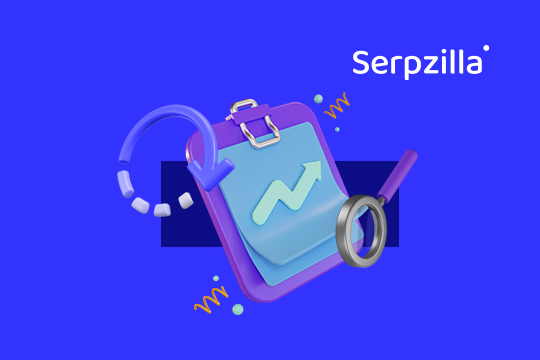Introduction
As someone who has owned over 40 blogs and worked on nearly 100+ websites, generating millions in revenue via SEO, one strategy stands out: internal linking.
Internal linking is one of the highest-leverage SEO activities (and it’s free to implement). Maybe you’ve heard of this before, or perhaps this is the first time it has crossed your path—regardless, learning how to link your website internally and why it’s important can make all the difference.
In this article, I’ll discuss internal linking basics and best practices and walk you through my exact strategy for internally linking websites.
Who am I?
I’m Steven Schneider, co-founder and CEO of TrioSEO, a content agency specializing in creating high-intent blogs for brands. Before TrioSEO, I co-owned a portfolio of 40 websites and published roughly 400 monthly articles. Needless to say, I’ve put in my “10,000 hours” of internal linking.
Let’s get going.
TL; DR
- Internal linking is an easy, free way to upgrade your SEO. It connects your pages, helps Google crawl your site, and makes it easier for visitors to find what they need.
- It’s all about linking relevant content, improving your site’s structure, and sharing link juice.
- Use internal links in your blog posts, navigation, and service pages to guide readers naturally and keep them engaged.
- Stick with a hub-and-spoke approach, use clear anchor text, and focus on making links useful for readers and search engines.
- Watch out for common pitfalls like repetitive anchor text, ignoring key pages, or leaving broken links on your site—it’s all about keeping things tidy and user-friendly.
What Are Internal Links? How Do Internal Links Work?
Internal links are any link from one page to another within a website.
An internal link can be on your home page, about page, blog, service page, etc. – it doesn’t matter. What matters is that you connect (e.g., link) relevant content using optimized anchor text (more on that later).
Take a look at the footer of a website. See those links? Those are internal links.
Essentially, anytime you see a link that directs you to another page within the same website, it’s an internal link.
Hence the name.
Internal Link Examples
Let’s run through a few examples of internal linking:
Types of Internal Links
- Home page links directing you to a service page
- Home page links routing to pricing pages
- Anchor text links in content
- Product or service listings
- Links within blog content
- Navigation menu links
- Legal and policy links
- Call-to-action links
- Related posts links
- Breadcrumb links
- Author bio links
- Category links
- Sidebar links
- Archive links
- Footer links
- FAQ links
Now that these are top of mind, you’ll become more familiar with internal links whenever you visit a website.
Take a minute to stop and look at this page- there are internal links all around.
The most interesting part? They all serve a purpose for you and search engines, but let’s put a pin on that idea.
Internal vs. External Links
So, what’s the difference between internal vs. external links? External links direct people (and Google) outside a website.
For example, take that TrioSEO link above- that’s an external link.
External links have their benefits but shouldn’t be confused with internal links. They are very different if you are working on an internal linking strategy.
Backlinks vs. Internal Links
Like external links, backlinks are an entirely different can of worms.
What is a backlink?
A backlink is any link from someone else’s website that points to yours.
Going back to the TrioSEO link above, that’s a backlink for TrioSEO. A backlink is an external link (it just depends on what side of the equation you’re viewing it from).
But again, when thinking about backlinks vs. internal links, they should not be confused or used interchangeably.
Looking for a great platform to help build your backlink profile? Create a Serpzilla account today and start researching potential partners.
Why Are Internal Links Important For SEO?
Internal links are massively important for SEO, but why?
Let’s look at a few reasons and help clarify the importance of internal linking.
Do Internal Links Help SEO?
Do internal links help SEO? Short answer: yes – 100%.
Long answer: internal links help SEO by connecting relevant content, allowing search engines like Google to crawl it more efficiently.
When Google and other search engines like Bing or DuckDuckGo can crawl content, they understand your site better.
For example, if you have four key content hubs on your site, and each hub has 25 spoke articles (totaling 100 blogs), Google will recognize that A) you have a great understanding of the niche and B) you are an authoritative thought leader.
Taking it one step further, the anchor text you use to structure the internal link (e.g., the phrase or keyword holding the link) helps Google (and readers) understand what’s on the other side of the link.
So, as your anchor text is more optimized toward that specific URL’s primary or secondary keyword, search engines acquire more information about what that content is intended to rank for.
Improving Site Structure and Navigation
One primary use case for internal links is navigation links in a website’s header and footer. Any website will have essential links nested at the top and bottom.
For example, in the navigation menu, you might see:
- Service page links
- An about page link
- A contact page link
- Their link to the blog
- Resources page
- Pricing page
Scroll down to the footer, and you might see:
- Other service page links (not in the header)
- Links pointing to a career or hiring page
- A link to a privacy policy
- A partner page link
- Their terms of use
- An FAQ page
As your site grows and more pages are added, it’s vital to consider how people (and search engines) can access those pages.
In addition to the header and footer, you might also see breadcrumbs, a great navigational hack for tracking a page’s nested order relative to its starting position.
For example, if you are visiting an e-commerce site, perhaps you’re shopping for:
- Mens > Tops > T-shirts > Large
This connection of links that might be displayed at the top of a page is your breadcrumb.
That are plenty of use cases for internal links as a site structure and navigation tactic; the key is ensuring that they are optimized for visitors and search engines.
Improving Engagement and Conversion
Aside from site structure and navigation, internal links also improve engagement and conversion.
Take internal links within blogs: They can link to other blogs readers might find useful (engagement) or point to a call-to-action (CTA) that aims to convert that browser into a buyer.
Improving Discoverability for Search Engines
Ever heard of an orphan page on a website? These pages don’t have an internal link connected to them, leaving them orphaned and alone. Sad, I know.
The better your internal linking is, the better search engines can crawl your website (and rank your content).
Aside from regular internal links within content, site maps also serve as internal links.
What’s a site map?
A site map is a combination of all URLs on a website listed in one central location. Sometimes, they are separated by posts or pages, but not always. Surprisingly, site maps aren’t for readers and mainly benefit search engines.
In addition to crawling all the pages of your site and scanning content, search engines love site maps because they simplify the process.
Pro tip: Ensure you have an XML site map set up and submitted to Google in Google Search Console. Yoast is a pretty easy plugin for WordPress that streamlines everything.
Distributing Page Authority and Link Equity
Okay, it’s time to tackle something a bit more advanced: page authority and link equity.
Let’s start at a high level with domain authority (DA), sometimes referred to as domain rating (DR). I prefer DR, so let’s stick with that. Your website’s domain rating (range of 0-100) equates to how authoritative your website is based on its backlink profile.
Why is this important?
As you build relationships with brands and industry allies, Google and other search engines consider backlinks a ‘vote of confidence.’ If a credible website says, “Hey, go check out this website” and links to yours, that’s a trustworthy sign from Google’s point of view.
Taking it one step further and keeping that concept in mind, individual pages on your website also have authority (and varied authority too).
Let’s go back to the TrioSEO link above in the introduction. It links to the homepage, which means a little bit of link juice (e.g., link equity) from Serpzilla gets sprinkled across every page of the website. However, if you acquire a backlink to a direct page, such as this B2B SEO services link, the link juice is concentrated on that page.
Okay, stick with me. Now take those same concepts and apply them to internal linking.
The internal links within that B2B SEO Services page each benefit from the page authority. Pages with high page authority have the power to uplift and support underperforming content and vice versa; a page with low page authority won’t move the needle.
Nonetheless, internal linking is a solid way to diversify link equity.
Internal Linking Best Practices
There are definitely some dos and don’ts in this arena, but let’s focus on some internal linking best practices for starters:
- Use 3-7 links per page (depending on content length)
- Ensure links are contextually beneficial for the reader
- Use primary and secondary keywords as anchor text
- Keep content linked with a hub and spoke strategy
- Regularly monitor and update links as needed
- Use do-follow links (avoid no-follow links)
Let’s dive into a few of these specifically.
Hub and Spoke Strategy
Have you ever heard of the hub and spoke strategy in SEO?
The hub and spoke strategy, also referred to as content clustering or content silos, is when you create content around a given theme. Imagine a wheel: there’s a center (e.g., hub) and spokes connected. Take this concept and apply it to your internal linking strategy.
For example, at TrioSEO, we have a B2B content hub:
- B2B SaaS SEO
- B2B SEO Audit
- B2B Blog Strategy
- B2B Content Audit
- B2B Content Writing
- B2B Blogging Services
- B2B Keyword Research
- B2B SaaS Content Strategy
- Importance of SEO For B2B
- B2B SEO Best Practices
- B2B SEO Case Study
- B2B SEO Services
- B2B SEO Statistics
- B2B SEO Tools
- B2B Writing
It would make sense to the reader (and Google) to have a few internal links connecting to other B2B topics within each blog. More importantly, you should link back to one of your high-intent service pages so as your page authority grows (per blog SEO), that internal link helps support priority content.
Ultimately, following a hub and spoke internal linking structure helps readers connect the dots, and search engines understand your topical authority on a specific content cluster.
Optimizing Anchor Text
Surprisingly, the anchor text is used when internal linking matters (more than you probably think).
First, what’s anchor text?
Anchor text is the phrase or group of words to which a link connects.
For example, “Check out our on-page SEO checklist to learn how to improve on-page aspects like title tags, meta descriptions, visual elements, alt-text, and more.”.
That phrase, “on-page SEO checklist,” is the anchor text connected to the internal link.
Anchor text best practice is to target the primary keyword you want to rank for or any of the secondary keywords associated with that page. The phrase you’re linking should be descriptive and easy to understand what the content on the other side of the link is about.
You don’t want to link long groups of text (like a sentence) or things like “click here” (which hurts your SEO).
How Many Internal Links Per Page?
Everyone always asks, “How many internal links per page is best for SEO?”
The typical SEO answer is, “It depends.”
Aim for 3-7 internal links per page, depending on the length of your content and the type of content. For example, if you have a 2,500-word blog, including 5-7 internal links is probably fine. But if you have a 750-word piece of content (e.g., blog or landing page), then 3 is plenty.
Use your best judgment here. If the page looks loaded with links (internal and external), remove some.
Always consider the reader’s user experience.
How Many Internal Links Is Too Many?
To the other hand, how many internal links is too many? Again this ties back to the type of content, length, and user experience. If your page feels like it is loaded with links,
Internal Linking Mistakes to Avoid
Below are a few key internal linking mistakes to avoid:
| Internal Linking Mistakes to Avoid | Details | Solution |
| Ignoring Important Content | Don’t ignore high-intent pages that have the potential to increase organic traffic. | Categorize your URLs based on priority, intent, and funnel (e.g., TOFU, MOFU, BOFU) and ensure you link to important content when it makes sense. |
| Too Many Links Per Page | Adding too many links to a page can come off as spammy to search engines and ruin the user experience. | Less is more. Link content within the hub and spoke model and prioritize your reader’s experience. |
| Overusing Exact Match Anchor Text | Don’t overuse the same anchor each time you link a specific URL. | Switch things up here and there and look for secondary keyword opportunities. |
| Linking Only to Top-Level Pages | Don’t reuse the same internal links for the sake of ease. Your site should have a cohesive strategy throughout. | Diversify your internal linking and ensure that all pages have a good mixture of links within their given silo. |
| Not Fixing Dead Links or Redirects | Don’t leave dead internal links on your site (linking to a 404 page) or redirect. | Audit your links every so often using tools like Ahrefs or SEMrush. |
Frequently Asked Questions (FAQs)
Below are a few frequently asked questions you might find interesting:
How to Find Internal Links to a Page
There are a few great ways to find internal links to a page:
- Use a plugin like Yoast Premium
- Use an SEO analysis tool like Ahrefs
- Use an advanced tool like ScreamingFrog
All can crawl your site and generate a user-friendly report.
Should I Use NoFollow Internal Links?
No, you should not use no-follow internal links because no-follow does not pass link juice. Essentially, a no-follow link tells search engines not to follow the link or consider it valuable. All internal links should be do-follow.
What Are The Best Internal Linking Tools?
Some of the best SEO tools for internal linking are Ahrefs, Link Whisper, Yoast SEO, and Google Search Console.
Should Internal Links Open in a New Tab?
Whether internal links open in a new tab is a personal preference. You don’t want links to open in a new tab and not automatically take the reader there. But if they open in a new tab and the reader doesn’t have to click on the tab, it’s fine. This won’t make or break your SEO.
What If You Have Too Many Internal Links?
If you have too many internal links, you should audit your site and determine when/where links are used. Next, consider removing links that point to low-priority pages. Don’t remove links from high-page authority pages that link to high-intent pages (e.g., service pages).
Conclusion
Internal linking is one of the few strategies that can massively move the needle for your SEO. All it takes is a bit of organization, some keyword knowledge, and a little bit of patience.
Just remember to stick to the hub-and-spoke model, don’t overload your page with links, and don’t no-follow them.
Looking to upgrade your backlink profile? Create a Serpzilla account and start building links in no time.
Thanks for reading!








